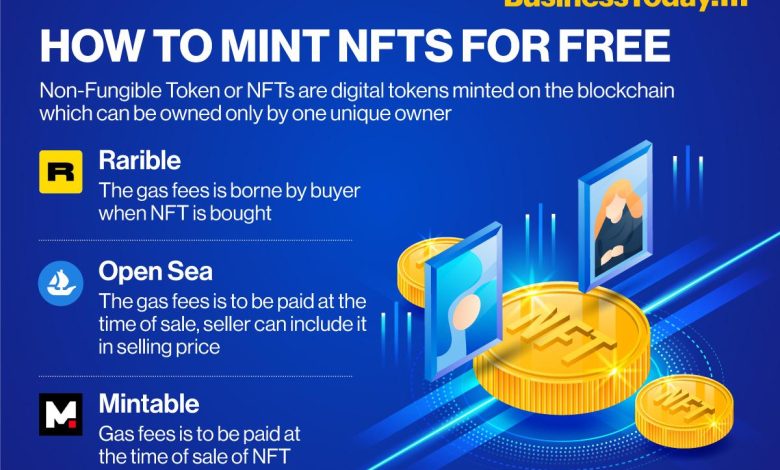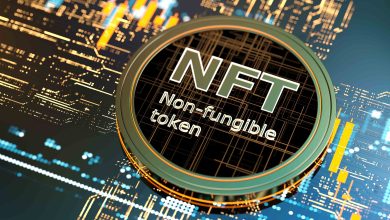How to Create and Sell NFTs on Different Platforms

- Understanding NFTs: A Beginner’s Guide
- Choosing the Right Platform for Your NFTs
- Step-by-Step Guide to Creating NFTs
- Tips for Marketing and Selling Your NFTs
- Exploring the Top NFT Marketplaces
- Navigating the Legal Aspects of NFTs
Understanding NFTs: A Beginner’s Guide
NFTs, or non-fungible tokens, have gained significant popularity in recent years as a new way to buy, sell, and trade digital assets. Understanding NFTs is essential for anyone looking to create and sell them on different platforms.
An NFT is a unique digital asset that is stored on a blockchain, making it one-of-a-kind and not interchangeable with any other token. This uniqueness is what gives NFTs their value and appeal to collectors and investors.
When you create an NFT, you are essentially tokenizing a digital file, such as an image, video, or piece of music, and attaching ownership rights to it. This ownership is recorded on the blockchain, providing a secure and transparent way to prove authenticity and ownership of the asset.
To sell an NFT, you can list it on various online marketplaces that support NFT transactions, such as OpenSea, Rarible, or Foundation. These platforms allow you to set a price for your NFT and receive payment in cryptocurrency when it is sold.
Before creating and selling NFTs, it is important to understand the potential risks and challenges associated with this emerging technology. While NFTs can be a lucrative investment opportunity, they also come with concerns about copyright infringement, environmental impact, and market volatility.
By educating yourself on the ins and outs of NFTs, you can make informed decisions about creating and selling digital assets on different platforms. Whether you are an artist, musician, or content creator, NFTs offer a new way to monetize your work and connect with a global audience of collectors and enthusiasts.
Choosing the Right Platform for Your NFTs
When it comes to creating and selling NFTs, choosing the right platform is crucial for success. There are several factors to consider when selecting a platform for your NFTs. One of the most important things to look at is the fees associated with each platform. Some platforms charge higher fees than others, so it’s essential to do your research and find one that aligns with your budget.
Another factor to consider is the audience that each platform attracts. Some platforms cater to a more niche audience, while others have a broader reach. It’s essential to choose a platform that aligns with your target market to maximize your chances of success. Additionally, consider the level of security and transparency offered by each platform. You want to ensure that your NFTs are protected and that you have full visibility into the sales process.
Furthermore, consider the ease of use of each platform. Some platforms are more user-friendly than others, making it easier for you to create and sell your NFTs. Look for a platform that offers a seamless experience and provides the tools you need to succeed. Finally, consider the level of customer support offered by each platform. If you run into any issues or have questions, it’s essential to have access to reliable customer support to help you navigate the process.
In conclusion, choosing the right platform for your NFTs is a critical step in the process of creating and selling digital assets. Consider factors such as fees, audience, security, ease of use, and customer support when making your decision. By selecting the platform that aligns with your needs and goals, you can set yourself up for success in the world of NFTs.
Step-by-Step Guide to Creating NFTs
To create and sell NFTs on different platforms, you can follow a step-by-step guide to ensure a smooth process. First, you need to choose a platform that supports NFT creation and sales, such as OpenSea, Rarible, or Mintable. Once you have selected a platform, you will need to create an account and connect your digital wallet to the platform.
Next, you will need to create your NFT by uploading the digital file you want to tokenize. This could be an image, video, audio file, or any other digital asset. Make sure to provide a title, description, and any other relevant information about your NFT to attract potential buyers.
After creating your NFT, you will need to set a price for it. You can choose to list your NFT for a fixed price or put it up for auction. Consider pricing your NFT competitively to attract more buyers.
Once your NFT is listed for sale, you can promote it on social media and other online platforms to reach a wider audience. Engage with potential buyers and answer any questions they may have about your NFT to build trust and credibility.
Finally, when a buyer purchases your NFT, the transaction will be recorded on the blockchain, and you will receive payment in cryptocurrency. Make sure to transfer the ownership of the NFT to the buyer promptly to complete the sale.
By following this step-by-step guide, you can create and sell NFTs on different platforms successfully. Remember to stay informed about the latest trends and developments in the NFT space to maximize your success as an NFT creator and seller.
Tips for Marketing and Selling Your NFTs
When it comes to marketing and selling your NFTs, there are several tips to keep in mind to maximize your success. Here are some key strategies to help you promote and sell your digital assets:
- Utilize social media platforms to showcase your NFTs and engage with potential buyers. Platforms like Twitter, Instagram, and TikTok can be powerful tools for reaching a wide audience.
- Collaborate with other artists and creators to cross-promote each other’s work and expand your reach. Building a network within the NFT community can help you gain visibility and attract more buyers.
- Participate in NFT marketplaces and online auctions to showcase your work to a targeted audience of collectors and investors. Platforms like OpenSea, Rarible, and Foundation are popular choices for selling NFTs.
- Create a strong brand identity for your NFTs to differentiate yourself from other artists and stand out in a crowded marketplace. Develop a unique style and aesthetic that resonates with your target audience.
- Offer limited editions or exclusive collections to create scarcity and drive up demand for your NFTs. Limited availability can increase the perceived value of your digital assets and attract collectors looking for rare pieces.
By following these tips and implementing effective marketing strategies, you can increase the visibility and desirability of your NFTs, ultimately leading to more sales and success in the digital art market.
Exploring the Top NFT Marketplaces
When it comes to exploring the top NFT marketplaces, there are several platforms that artists and creators can consider for selling their digital assets. These marketplaces provide a platform for individuals to buy and sell NFTs, allowing for a wide range of digital artwork to be showcased and sold to a global audience.
One popular NFT marketplace is OpenSea, which is known for its user-friendly interface and wide variety of digital assets available for purchase. Another well-known platform is Rarible, which allows creators to mint their own NFTs and sell them directly to buyers. Additionally, platforms like Foundation and SuperRare cater to more exclusive and high-end digital art pieces, attracting collectors looking for unique and rare NFTs.
For artists looking to reach a broader audience, platforms like Nifty Gateway and Mintable offer a larger user base and marketing support to help promote their NFTs. These marketplaces often feature collaborations with well-known artists and brands, attracting a diverse range of buyers interested in collecting digital art.
Overall, exploring the top NFT marketplaces can help artists and creators find the right platform to showcase and sell their digital assets. By researching and understanding the different features and audiences of each marketplace, individuals can maximize their chances of success in the growing world of NFTs.
Navigating the Legal Aspects of NFTs
Navigating the legal aspects of NFTs is crucial for creators and sellers to ensure compliance with regulations and protect their intellectual property rights. When creating and selling NFTs on different platforms, it is essential to understand the legal implications involved.
One key consideration is copyright law, which governs the ownership and use of creative works. Creators should ensure they have the necessary rights to the content they are tokenizing as an NFT. Additionally, they should be aware of any licensing agreements or restrictions that may apply to their work.
Another important legal aspect to consider is the terms of service of the platform on which you are selling your NFTs. These terms may dictate how your NFT can be used, transferred, or reproduced. It is essential to review and understand these terms to avoid any potential legal issues down the line.
Furthermore, creators and sellers should be mindful of potential issues related to fraud, theft, and disputes over ownership. Implementing secure storage and transfer methods for NFTs can help mitigate these risks. Additionally, using smart contracts can provide an added layer of security and transparency in NFT transactions.
In conclusion, navigating the legal aspects of NFTs requires a thorough understanding of copyright law, platform terms of service, and security measures. By staying informed and proactive in addressing these legal considerations, creators and sellers can protect their rights and assets in the growing NFT market.





